The Austrian Academy of Sciences (OEAW)
The Austrian Academy of Sciences (OEAW) is Austria’s largest non-university research facility with over 1300 employees looking back on a history of over 170 years. The Academy’s 28 institutes perform applied and basic research in many different disciplines ranging from archaeology, cultural sciences, linguistics, and literary studies to quantum physics and molecular biology at the highest international level. The youngest amongst these is the Austrian Centre for Digital Humanities (ACDH-OeAW) which was founded to foster the change towards digital paradigm in the humanities.
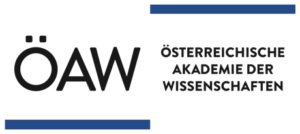
The National Institute of Archaeology with Museum at the Bulgarian Academy of Sciences (NAIM-BAS)
The National Institute of Archaeology with Museum at the Bulgarian Academy of Sciences covers the complete study of the culture of tribes and peoples who have occupied modern Bulgaria from the Palaeolithic to the 18th century. NIAM-BAS is a national centre and coordinator of all field research in Bulgaria, and exercises scholarly and methodological control on it.
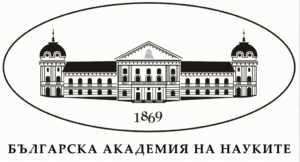
The Cyprus Institute (CYI) is a novel research and educational institution with a scientific and technological orientation. Research is carried out in cross-disciplinary Centers that address problems of great scholarly relevance, global significance and regional focus. Shared infrastructures incorporating state of the art technology support the research activities of all Centers. The research center to be involved in the project is the Science and Technology in Archaeology Research Center (STARC). It is devoted to the development, introduction and use of advanced science and technologies in Archaeology and Cultural Heritage.
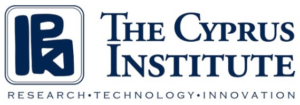
Institute of Archaeology of the Czech Academy of Sciences, Prague (IAP-CAS)
The Institute of Archaeology of the Czech Academy of Sciences in Prague (https://www.arup.cas.cz/) is a public research institution. Its main activities are scientific research in the field of archaeological fieldwork, technical, laboratory, restoration and scientific processing and interpretation of the obtained collections of objects and information, development of archaeological theory, methods, methodology and informatics, coordination of rescue archaeological activities, implementation of development-led archaeological fieldwork, building a central archaeological information database and a professional archaeological library. In accordance with Act No. 20/1987 Coll., it participates in the execution of state heritage protection, coordinates field activities and collects information on archaeological excavations in its territorial jurisdiction (Central Bohemia, Hradec Králové, Pardubice, South Bohemia, Pilsen, Karlovy Vary, Ústí nad Labem, Liberec and Prague). Together with IAB-CAS, IAP-CAS is responsible for administration and operation of the national research infrastructure Archaeological Information System of the Czech Republic (AIS CR; https://www.aiscr.cz/).

Institute of Archaeology of the Czech Academy of Sciences, Brno (IAB-CAS)
The Institute of Archaeology of the Czech Academy of Sciences in Brno (https://www.arub.cz/) carries out basic scientific and applied research on selected fundamental topics of prehistoric and early medieval history, mainly in the territory of Moravia and Bohemian Silesia and in the wider geographical area of the central Danube region, based on archaeological sources. In accordance with Act No. 20/1987 Coll., it participates in the exercise of state heritage protection, coordinates field activities and collects information on archaeological excavations in its territorial jurisdiction (the South Moravian, Moravian-Silesian, Olomouc, Zlín and Vysočina Regions). Together with IAP-CAS, IAB-CAS is responsible for administration and operation of the national research infrastructure Archaeological Information System of the Czech Republic (AIS CR; https://www.aiscr.cz/).
The Department of Archaeology and Heritage Studies at Aarhus University (AU)
The Department of Archaeology and Heritage Studies at Aarhus University (AU) has an international profile and is part of strong and international research networks. A dynamic research environment provides the framework for large research projects, international conferences and a variety of visiting researchers. The environment is versatile and cross-disciplinary, and the academic staff’s research competences span topics ranging from various cultural historical themes, excavation and surveying methods, quantitative analysis methods, digital applications and representation and public archaeology.
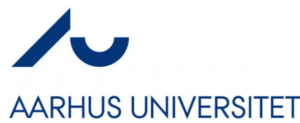
Institut National de recherches archéologiques préventives (INRAP)
Created in 2002, INRAP is a public research institution under the supervision of the Ministries of Culture and Communication, and of Research. It ensures the detection and study of the archaeological heritage affected by development and infrastructural works. It undertakes the study of these finds, disseminates the research results within the scientific community and contributes to spread the knowledge of archaeology to the general public. With approximately 2,200 collaborators and researchers, INRAP is present throughout France. It is by far the largest and most important operator in preventive archaeology at work, in both rural and urban areas with 8 interregional offices and 50 research centres.

The Archaeology and Regions Laboratory, University of Tours (LAT)
The Laboratoire Archéologie et Territoires (Archaeology and Regions Laboratory) belongs to a CNRS joint research unit (UMR CITERES) and to the Université François Rabelais de Tours. One of the main purposes of the LAT research laboratory is to train students in archaeology who will move on to state institutes (such as CNRS, University, INRAP), in community services or in private companies dealing with archeology. This discipline produces a large amount of data (archaeological objects, bones, etc.) that are constantly in demand.

Data Center for the Humanities – University of Cologne (DCH)
We are a central institution of the Faculty of Arts and Humanities and advise and support researchers at the University of Cologne and beyond on issues relating to the permanent preservation, availability and presentation of data and results of research in the humanities. In coordination with our local partners, we supplement research data management at the Faculty with a profile tailored to the humanities.
As a partner in the “FAIR.rdm” project in the SPP 2143 “Entangled Africa”, the DCH publishes the metadata of the SPP’s research data in the ARIADNE portal.
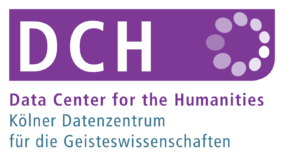
“The Role of Culture in the Early Expansions of Humans” at the Heidelberg Academy of Sciences and Humanities
In 2008 the Heidelberg Academy of Sciences and Humanities initiated ROCEEH (The Role of Culture in Early Expansions of Humans), a multidisciplinary research project located at the Senckenberg Research Institute in Frankfurt and the University of Tübingen. The team consists of cultural scientists, archaeologists, paleoanthropologists, paleobiologists, geographers, and database specialists. ROCEEH’s mission is to generate a systemic understanding of “becoming human” and encompasses the time period from three million to 20,000 years before present, across Africa and Eurasia. All records from ROCEEH’s ROAD database are available in the Portal Catalogue and are updated every six months.
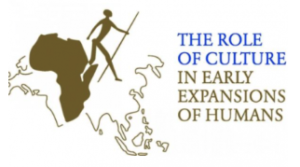
Athena Research Center (Athena RC)
Athena RC conducts research and technological development in Informatics and Computational Sciences, tackling global challenges, addressing local needs, and producing novel and deep technological results with a broad impact on other sciences, industry, and society at large. Multidisciplinarity is at the foundation of the research philosophy of Athena RC, which carries out R&D both at the level of information technology itself and at the level of specific applications. Computational sciences thus form a strong component of the Athena RC activities, including – but not being limited to – computational linguistics, archaeology, cultural heritage, engineering, medicine, biology, biodiversity, earth observation, space science, mechanics, and the arts. Athena RC serves the full spectrum of the research lifecycle, starting from basic and applied research, continuing on to system & product building and infrastructure service provision, and ending with technology transfer and entrepreneurship. Athena RC is organized into four Institutes and seven Units, operates in three cities (Athens, Patras and Xanthi) positioning itself as an actor and partner of the regional plans conducted by political, academic, economic and societal entities. Athena RC has a longstanding and continuously evolving Quality Management System certified by ISO 9001:2015 in the fields of Project Management, Software Development and 3D Digitisation Services Provision.

The Foundation for Research and Technology – Hellas (FORTH)
FORTH is one of the largest research centres in Greece with well-organized facilities and highly qualified personnel. It consists of six Research Institutes and its research and technological directions cover major areas of scientific, social, and economic interest. In its thirty-year history, FORTH has established itself as a renowned and highly competitive research organisation. FORTH will participate in the current project proposal with two Institutes, the Institute of Computer Science (ICS) and the Institute of Molecular Biology and Biotechnology (IMBB) with the Archaeogenetics facility.

The Hungarian National Museum (HNM)
The Hungarian National Museum was established in 1802 and it is the largest museum in Hungary, with also the largest collection. The HNM offers complex cultural heritage protection solutions that range from locating archaeological sites and preparing surveys through excavations to complex archaeological research and making exhibitions. The HNM also has a Laboratory for Applied Research, which systematically collects scientific data through interdisciplinary analyses.

Connecting Archaeology and Architecture in Europe (CARARE)
CARARE is a non-profit membership association whose core aim is to advance professional practice and foster appreciation of the digital archaeological and architectural heritage. CARARE helps its members and data partners to share their digital content and to make it available for reuse, offering advice, guidance, training and technical support. It is an accredited aggregator for the Common European Data Space for Cultural Heritage, providing tools and services to support publication of metadata and content. CARARE is a member of the consortium which delivers the Data Space and has been a partner in several EU projects under Horizon Europe, Digital Europe, Creative Europe often in collaboration with our members.
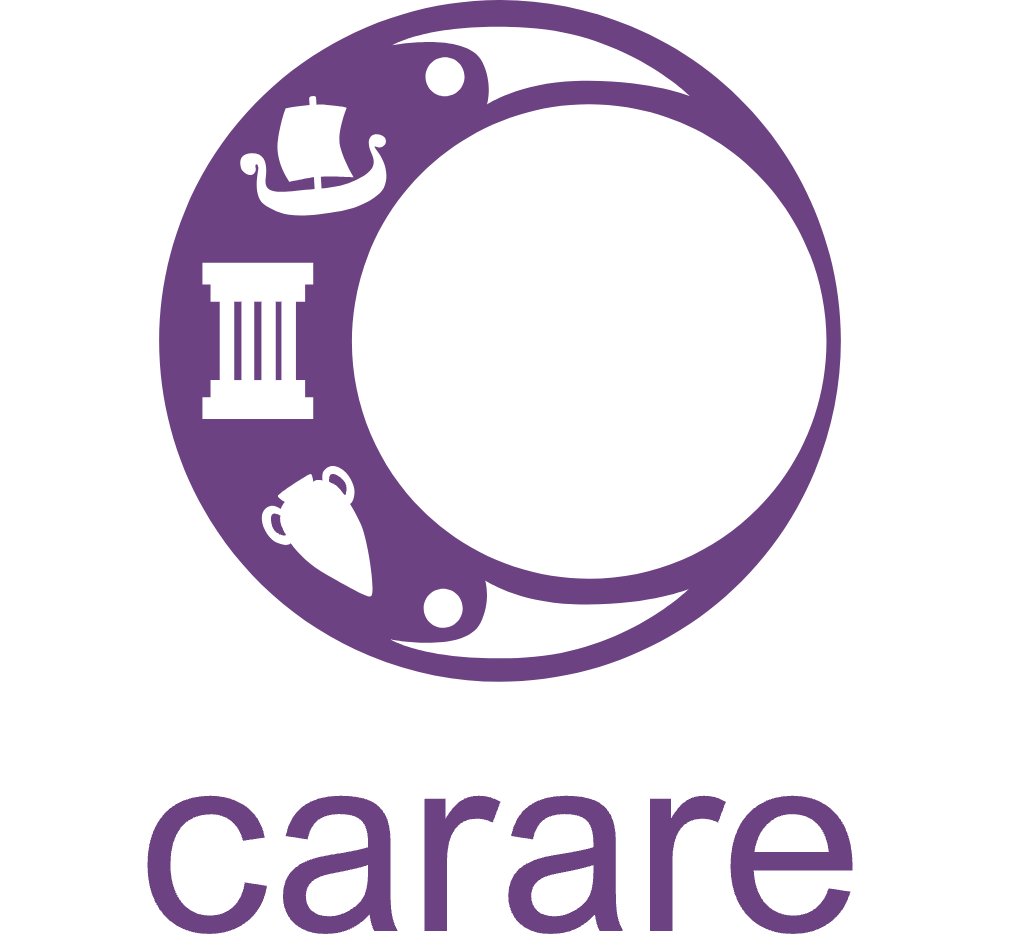
The Digital Repository of Ireland
The Digital Repository of Ireland (DRI) is a CoreTrustSeal-certified trustworthy digital repository for the preservation of Ireland’s humanities, cultural heritage, and social sciences digitised and born-digital data for long-term access and discovery.
DRI provides a unique service as the national infrastructure leading digital preservation in Ireland. Digital content is fragile, meaning that our shared digital cultural heritage is at risk of being lost without digital preservation, described as the ‘active management of digital content over time to ensure its ongoing access’ (Library of Congress).
DRI provides reliable, long-term, sustained digital preservation and access to social and cultural digital data generated by researchers in Ireland, held by Irish institutions, or digital material pertaining to the island of Ireland. We make this data openly available in line with the FAIR data principles of findability, accessibility, interoperability, and reusability.
DRI operates on a membership model. We provide stewardship of digital data deposited in the DRI repository by a range of member organisations including higher education institutions, cultural heritage institutions (the GLAM sector of galleries, libraries, archives, and museums), government agencies, local authorities, and community archives.
In addition to our core programme of work, DRI is a research-performing organisation (RPO) engaged in a rich range of collaborative research projects. As of 2022, DRI is also the coordinating body for the National Open Research Forum, the national body tasked with driving Ireland’s open research agenda.
DRI is funded by the Department of Further and Higher Education, Research, Innovation and Science (DFHERIS) via the Higher Education Authority (HEA) and the Irish Research Council (IRC).
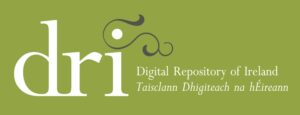
The Discovery Programme: Centre for Archaeology and Innovation Ireland was established in 1991 by the Office of the Taoiseach as a research-driven organisation focusing on archaeological research across the island of Ireland. Specific objectives of the Discovery Programme include: providing research leadership in archaeological research and innovation, supporting heritage practitioners through the application of archaeological and technological research methodologies, nurturing collective, progressive and innovative archaeological research and engaging the wider public in archaeological research and educational initiatives. One of the key components of the Discovery Programme is the application of next technology and digital methods in archaeology and cultural heritage research with particular emphasis on ensuring the results of this research are available to the wider research community.
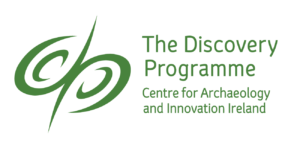
The National Institute of Archaeology
The National Institute of Archaeology is committed to being at the forefront of scientific research on local archeology and reaches the targets with strong basic research, working closely with domestic and foreign researchers and research institutions, and active academic debate which is reflected in the powerful editing work. It is responsible for a significant proportion of excavations and site survey in Iceland, setting the tone for furthering the understanding of Iceland’s past.
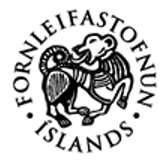
Central Institute for Archaeology (ICA)
The Central Institute for Archaeology (Istituto Centrale per L’Archeologia, ICA) is a non-general executive office of the Directorate General for Archaeology, Fine Arts and Landscape of the Ministry of Culture, based in Rome, and carries out functions in the field of study and research in the field of archaeology.

The Central Institute for the Union Catalogue of Italian Libraries and Bibliographic Information (ICCU)
The Central Institute for the Union Catalogue of Italian Libraries and Bibliographic Information (ICCU) is an Institute of the Italian Ministry of Cultural Heritage and Activities (MiBAC); it manages the National Library Service, the union catalogue of over 6.200 Italian libraries, and is responsible for providing the standard rules and regulations for cataloguing and for digitization of CH. The institute offers also a storage service to libraries and museums. ICCU has a deep expertise in digitisation standards and guidelines and coordinates on behalf of the Ministry major digital cultural heritage projects at national level such as Internet Culturale, the portal of the digital resources of the Italian libraries, and CulturaItalia, the national aggregator for Europeana. The ICCU cooperates in the ARIADNE RI with ICA, the Central Institute for Archaeology, with specific functions in the field of archaeology and research in the broader sense.

PIN is a research agency, a consortium created by the University of Florence with other public bodies and industrial associations to support the implementation of advanced research projects. Research activity is organized in laboratories, the one in charge of Cultural Heritage applications being VAST-LAB. It aims to support scientific research centered on knowledge, valorization and preservation of Cultural Heritage, and to improve understanding of its value by encouraging dissemination to the general public. VAST-LAB’s research focuses mainly on the creation and dissemination of international standards for dataset digitisation and accessible database design, as well as on the development of technological platforms that guarantee interoperability between different archives and the stakeholders involved in their management.

PRISMA was established in February 2014 to promote communication, research and the enhancement of culture as a usable and accessible asset. Composed of a group of researchers who have collaborated on numerous European projects in the field of Cultural Heritage and new technologies, PRISMA uses the experience of its team to design and create quality products. Our services are aimed both at institutions and museums that need to bring new audiences together, and at individuals and companies who wish to communicate themselves and their products in an innovative way. In 2022 the Cultural Association was joined by PRISMA CULTURA Srl in order to offer integration and development services.
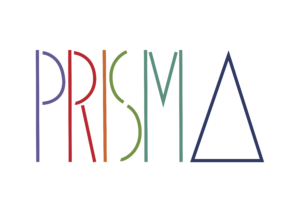
Department of Civilisation and Forms of Knowledge
The University of Pisa’s Department of Civilisations and Forms of Knowledge has a long-standing tradition of researching Mediterranean archaeology. The department will be partnering with the MAPPA Lab, a reputable research unit with extensive experience in archaeological methods and theory. The lab specialises in developing digital Methods APPlied to Archaeology (MAPPA) and manages the Department’s Digital Library and the Open Archaeological Data repository MOD, dealing with Open Data, Data Analysis, Artificial Intelligence, and GIS. The MAPPA Lab is involved in innovative projects, including spatial analysis, digital archaeology, big data, AI applications in archaeology, archaeological communication, and storytelling. It is also the coordinator of the HorizonEU AUTOMATA Project, which aims to digitise archaeological pottery and lithics using AI-assisted methods. Additionally, the lab is a partner of the Italian project FAIR, which focuses on human-centred AI research and is funded by NextGenEU. The lab has also coordinated the ArchAIDE project, which developed an AI system for the automatic recognition of archaeological pottery. The MAPPA Lab has access to the University of Pisa Green Data Centre, a next-generation data facility that houses over 400 latest-generation servers and 2 petabytes of storage dedicated to Scientific Computing and Virtualisation Services.
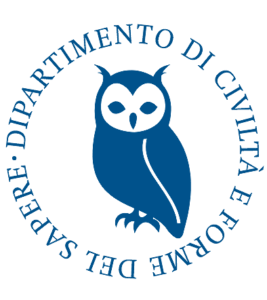
The National Research Institute for Cultural Properties (NARA)
Nara National Research Institute for Cultural Properties, is an organisation committed to comprehensive research on ancient cultural heritage. The ancient city of Nara is known for its wealth of ancient architecture and historical works of art, and the Institute was established to conduct research on these materials. Inspired in the mid-1950s, by the problem of preserving the Nara palace site, to get involved in research on buried cultural properties as well, the Institute has achieved significant results in the excavation and study of the Nara and Fujiwara palace site. These have contributed to international academic exchanges aimed at shedding light on the development of ancient capitals. Sophisticated techniques of restoration, developed at the Institute for preserving valuable buried cultural materials, have been applied in the preservation of sites and artefacts throughout the world and the techniques of reconstruction used in these projects are being applied in the presentation of historic sites throughout the country. In addition, the Institute also serves as a centre for the training of, and for conducting joint research with, both local government employees involved in archaeological excavations, and foreign researchers.

The Royal Netherlands Academy of Arts and Sciences (DANS)
Data Archiving and Networked Services (DANS) is the Dutch national center of expertise and repository for research data. We help researchers make their data available for reuse. This allows researchers to use the data for new research and makes published research verifiable and reproducible. With more than 275,000 datasets and a staff of 60, DANS is one of the leading repositories in Europe. DANS is an institute of KNAW (Royal Netherlands Academy of Arts and Sciences) and NWO (Dutch Research Council).
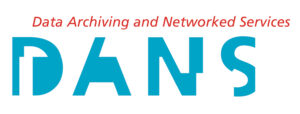
The National Laboratory of Civil Engineering of Portugal (LNEC)
Laboratório Nacional de Engenharia Civil (LNEC) is a public research and consultancy institute encompassing all branches of Civil and Materials Engineering, Architecture and Social Sciences. It is one of the leading European organisations in its field. It has a long experience in laboratory and field research work, physical and mathematical modelling and seismic vulnerability evaluation of structures, as well as assessment of safety conditions of civil works.

The National Heritage Institute of Romania (INP)
The National Heritage Institute of Romania is a public institution of national importance, subordinated to the Ministry of Culture and National Identity. The Institute manages the funds for research, expertise and execution of consolidation-restoration works and promotion of historical monuments; collects, processes and distributes the information regarding the movable and intangible cultural heritage, cultural institutions, theatre collections, cultural personalities; creates the platforms for content uploading and administers the inventory of intangible heritage.

The Vasile Parvan Institute of Archaeology of the Romanian Academy (IAVP)
Since the end of 19th c. the National Museum of Antiquities (today Vasile Parvan Institute of Archaeology of the Romanian Academy) was involved systematically in the archaeological research of Dobruja. During the last century, besides the research of the sites, there have been made surveys and other archaeological investigations that have fundamentally enriched the knowledge about the region next to the biggest river of Europe. The main research topics of the Archaeological Institute are still the same; only the methods of investigation, documentation and publication have changed. Among the last the most important method consists in archiving and digital publication.
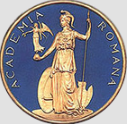
The Scientific Research Centre of the Slovenian Academy of Sciences and Arts (ZRC SAZU)
The Scientific Research Centre of the Slovenian Academy of Sciences and Arts (ZRC SAZU) was established in 1981. In its present form as a network of seventeen institutes with some 300 researchers and technicians, ZRC SAZU has developed into the leading Slovenian research centre in the humanities and a cutting-edge academic institution in central, eastern, and southeast Europe. It primarily conducts research on a broad variety of topics connected with natural and cultural heritage in Slovenia.
The Swedish National Data Service, University of Gothenburg (SND)
The University of Gothenburg is represented by the Swedish National Data Service (SND), a research data infrastructure that supports accessibility, preservation, and reuse of research data, making it easy to find, use, and cite research data from a variety of scientific disciplines. SND is present throughout the Swedish research ecology, through an extensive network of around 40 higher education institutions and other research organisations. Together, SND and this network form a distributed system of certified research data repositories with the SND main office as a central node. The certification means that SND ensures that research data are managed, stored, and made accessible in a secure and sustainable manner, today and for the future. SND collaborates with various international stakeholders in order to advance global access to research data. SND’s primary role is to support the accessibility, preservation, and re-use of data and related material.

Swedish Institutes at Athens and in Rome
The Swedish Institutes at Athens and in Rome are state-funded institutions for research and higher education, primarily within the humanities and with a focus on classical studies in a broad sense. We conduct research, arrange conferences, lectures and seminars, often in collaboration with other international actors; we also act as host institutions for Swedish research in the Mediterranean region, providing infrastructure, administrative and other support for user groups. We publish a scientific journal, Opuscula, as well as several Acta series (www.ecsi.se) in ancient studies. Our important archaeological archives are now accessible via the platform Common Ground. Archives for Swedish Archaeology in the Mediterranean.

The Department of Archaeology and Ancient History, University of Uppsala (UU)
The Department of Archaeology and Ancient History, Uppsala University, is a multidisciplinary research and teaching department characterised by cross departmental collaboration. At the department, teaching and research take place in the subjects of Archaeology, Osteology, Classical Archaeology and Ancient History, Egyptology and Global Environmental History. The Department hosts Swedigarch, the National Research Infrastructure for Digital Archaeology and the Excellence Centre The World in the Viking Age.
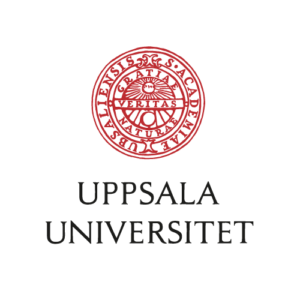
Swiss Archaeology is the leading association for archaeology in Switzerland. Founded as a learned civil society, SA has been committed to the investigation, protection and preservation of archaeological monuments for over 100 years. Today, Swiss Archaeology’s mission is still to provide in-depth archaeological knowledge and to facilitate public participation in archaeology and cultural heritage. As a national organisation, SA networks the different players at cantonal, but also local and federal levels in Swiss Archaeology and coordinates joint activities.
With its variety of periodicals, publications and events, SA contributes to the communication of research results and the promotion of Swiss archaeology throughout Switzerland and internationally. SA also campaigns for the interests of professional archaeologists as well as the archaeological heritage.
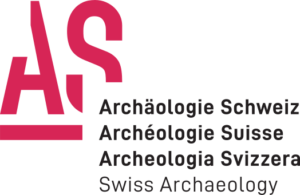
Historic Environment Scotland (HES)
Historic Environment Scotland (HES) is the lead public body established to investigate, care for and promote Scotland’s historic environment. The organisation was formed by the merger of government agency Historic Scotland with the Royal Commission on the Ancient and Historical Monuments of Scotland (RCAHMS) in 2015. HES is responsible for more than 300 properties of national importance, buildings and monuments which include Edinburgh Castle, Skara Brae, Fort George and numerous smaller sites, which together draw more than 5 million visitors per year. HES is also responsible for internationally significant collections including more than 5 million drawings, photographs, negatives and manuscripts, along with 20 million aerial images of locations across the world. HES invests about £14 million a year in national and local organisations, supporting building repairs, ancient monuments, archaeological work, the Conservation Area Regeneration Scheme and the voluntary sector. Our conservation experts provide guidance, training and technical research into Scotland’s built environment. Through our outreach programme, HES promotes community and individual learning engagement with Scotland’s heritage and contributes to the Scottish Government’s strategy to tackle climate change and reduce Scotland’s carbon footprint.

The University of South Wales (USW)
The University of South Wales (USW) is the largest University in Wales (UK) with 6 campuses in and around Cardiff and Newport. Previously the University of Glamorgan, it was renamed following the merger with University of Newport. The Faculty of Computing, Engineering and Science includes mechanical/electrical engineering, environmental technology, computing, mathematics subject areas and is known for its applied research. The Hypermedia Research Group is a long standing research group within the School of Computing and Mathematics, with a focus on semantic technologies, interoperability and services, natural language processing and information extraction, data cleansing, linked data and Knowledge Organization Systems (KOS) in the archaeology domain.
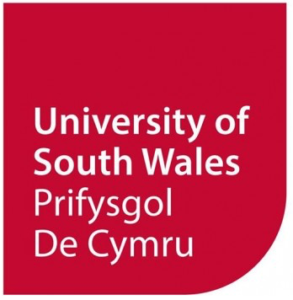
The University of York Archaeology Data Service (ADS)
The University of York has been a partner in over 180 EU projects including 14 ERC research grants, 35 Marie-Curie Fellowships, 17 ITNs and 7 Infra projects. The Department of Archaeology is one of the top archaeology departments in the UK, ranking 4th overall in the 2014 REF, and 2nd for its research impact. Since 1996 the Department has hosted the Archaeology Data Service (ADS), the world- leading digital data archive for archaeology. The core objective of the ADS is to support research, learning and teaching with high quality and dependable digital resources. It does this by preserving digital data in the long term, and by promoting and disseminating a broad range of data in archaeology.

Dr. Franco Niccolucci, Project coordinator of several EU projects on digital applications to archaeology and cultural heritage, including ARIADNE and ARIADNEplus. He was a founding director of the ARIADNE AISBL and is its current President.
Dr. Julian Richards, Director of the UK’s Archaeology Data Service, has championed online Open Access to archaeological data since the1990s, and he has been Deputy Coordinator and Director of Archaeology for ARIADNE from the outset. He was a founding director of the ARIADNE AISBL.
Dr. Guntram Geser, Salzburg Research, has been involved with ARIADNE since the first project, surveying user needs and identifying innovative solutions to benefit archaeology researchers.
Dr. Irina Oberländer-Târnoveanu, University of Bucharest, is the Associate Editor at Journal on Computing and Cultural Heritage (JOCCH) and Associate Lecturer at the National Institute for Cultural Research and Training (INCFC).
Dr. David Wigg-Wolf, Römisch-Germanische Kommission (RGK), has been working as a numismatist at the Römisch-Germanische Kommission der Deutschen Archäologischen Instituts, Frankfurt, since 2008. He is a member of the Scientific Committee of Nomisma.org and represented the DAI RGK in ARIADNEplus.


